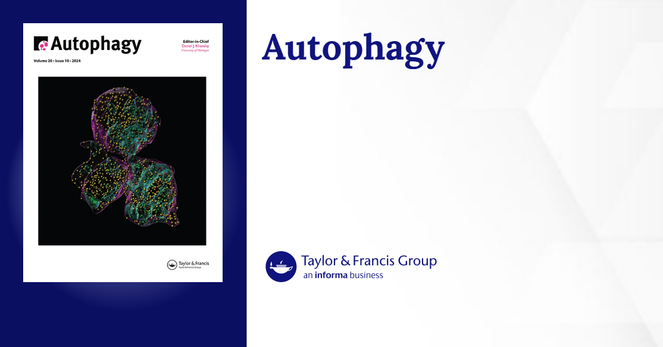https://doi.org/doi:10.1073/pnas.2505128122
https://pubmed.ncbi.nlm.nih.gov/41066114/
#Microtubule

MAP1LC3/LC3 (microtubule associated protein 1 light chain 3) proteins have long been thought to carry out their cellular and organismal functions, including macroautophagy/autophagy, exclusively in...
Infection by human cytomegalovirus (HCMV) continues to cause significant damage to human health. In the absence of a vaccine, vertical transmission from mother to fetus can result in profound neurological damage impacting quality of life. These studies focus on understanding the impact of HCMV infection on forebrain cortical neurons derived from induced pluripotent stem cells (iPSCs). We show that infection results in loss of neurite extension accompanied by cell-to-cell fusion. These pathogenic changes involve HCMV infection-mediated disruption of the microtubule network in iPSCs from different patient backgrounds. The microtubule stabilization agent paclitaxel partially protected neurite length and altered syncytia morphology without impacting viral replication. This work is part of our continued efforts to define putative strategies to limit HCMV-induced neurological damage.
Chemotherapeutic options for schistosomiasis, a prevalent infectious disease of poverty, are limited to just one drug, praziquantel (PZQ), and alternatives are needed. Our previous studies identified thiophen-2-yl pyrimidines (TPPs), which are structurally derived from microtubule (MT)-active phenylpyrimidines, as potent paralytics of Schistosoma mansoni. Although relatively non-toxic to mammalian cells, the progenitor compound, 3, had poor aqueous solubility and was lipophilic potentially hindering preclinical advancement. To address these issues and expand on the structure-activity and structure-property relationships, 43 new TPP analogs were designed and synthesized, their lipophilicity calculated (cLogP), and their anti-schistosomal activity evaluated in culture. This effort yielded compound 38, which possessed an oxetane-containing amine moiety at C5, and an ortho, ortho-difluoroaniline at C6 of the TPP scaffold. Compared to 3, compound 38 had better aqueous solubility (46 vs. < 0.5 micromolar), decreased lipophilicity (cLogP 4.48 vs. 6.81), a 14.5-fold increase in paralytic potency against adult S. mansoni (EC50 = 37 vs. 538 nM), and limited toxicity (CC50 > 20 micromolar) to three mammalian cell lines. In mice, 38 demonstrated a 3-fold longer plasma half-life (t1/2; 1.51 vs. 0.48 h) for a 40% loss in maximum plasma concentration (Cmax). In washout experiments, 38 produced a sustained paralysis of both juvenile and adult S. mansoni, possibly suggesting a broader in vivo efficacy spectrum compared to PZQ, which is inactive against the juvenile parasite. The two other medically important species, Schistosoma haematobium and Schistosoma japonicum, were also susceptible to 38. Finally, to identify potential protein targets, we synthesized a TPP photoaffinity labeling (PAL) probe that labeled several S. mansoni proteins by SDS-PAGE fluorescence analysis, although, notably, not tubulin, suggesting that the antischistosomal activity of 38 is a function of engaging other targets. Future work with the TPP series will aim to decrease toxicity further and improve pharmacokinetic properties to better support in vivo efficacy testing. ### Competing Interest Statement The authors have declared no competing interest.
Microtubule–associated proteins (MAPs) and tubulin post–translational modifications (PTMs) together shape a dynamic intracellular landscape for motor–driven transport, yet how the "MAP-PTM crosstalk" regulates organelle positioning remains unclear. Here, we show that MAP4 and MAP7D1 selectively partition onto distinct microtubule subsets demarcated by tyrosination and detyrosination, respectively, creating specialized tracks for kinesin motors. MAP4's preferential binding depends on its projection domain, while expanded microtubule lattice states mediate MAP7D1's enrichment on detyrosinated microtubules. Remarkably, rigor kinesin–1 (KIF5B–R) predominantly localizes to detyrosinated, MAP7D1–coated tracks, whereas rigor kinesin–3 (KIF1A) prefers tyrosinated, MAP4–decorated microtubules. We further find that the local density of MAP4 and MAP7D1 on microtubules fine–tunes lysosomal movement and directional transport. Moreover, MAP density is modulated to coordinate lysosomal reorganization in response to nutrient availability. During starvation MAP7D1 density on microtubules increases while MAP4 density decreases, localizing lysosomes to the perinuclear region. Conversely, with nutrient stimulation, MAPD1 density declines, allowing lysosomes to migrate towards the cell periphery. Altering the cellular levels of MAP4 and MAP7D1, either up or down, hinders lysosomal motility, trapping them near the nucleus and impairing their responsiveness to nutrient stimulation. Together, our findings reveal two distinct MAP–PTM circuits, a MAP4–tyrosination–kinesin–3 axis and a MAP7D1–detyrosination–kinesin–1 axis, that govern lysosome positioning for nutrient signalling, highlighting the combinatorial logic of MAP and tubulin codes in shaping lysosomal function. ### Competing Interest Statement The authors have declared no competing interest. Department of Biotechnology, Ministry of Science and Technology, India (DBT), BT/RLF/Re-entry/39/2018 Science and Engineering Research Board, https://ror.org/03ffdsr55, CRG/2022/008391